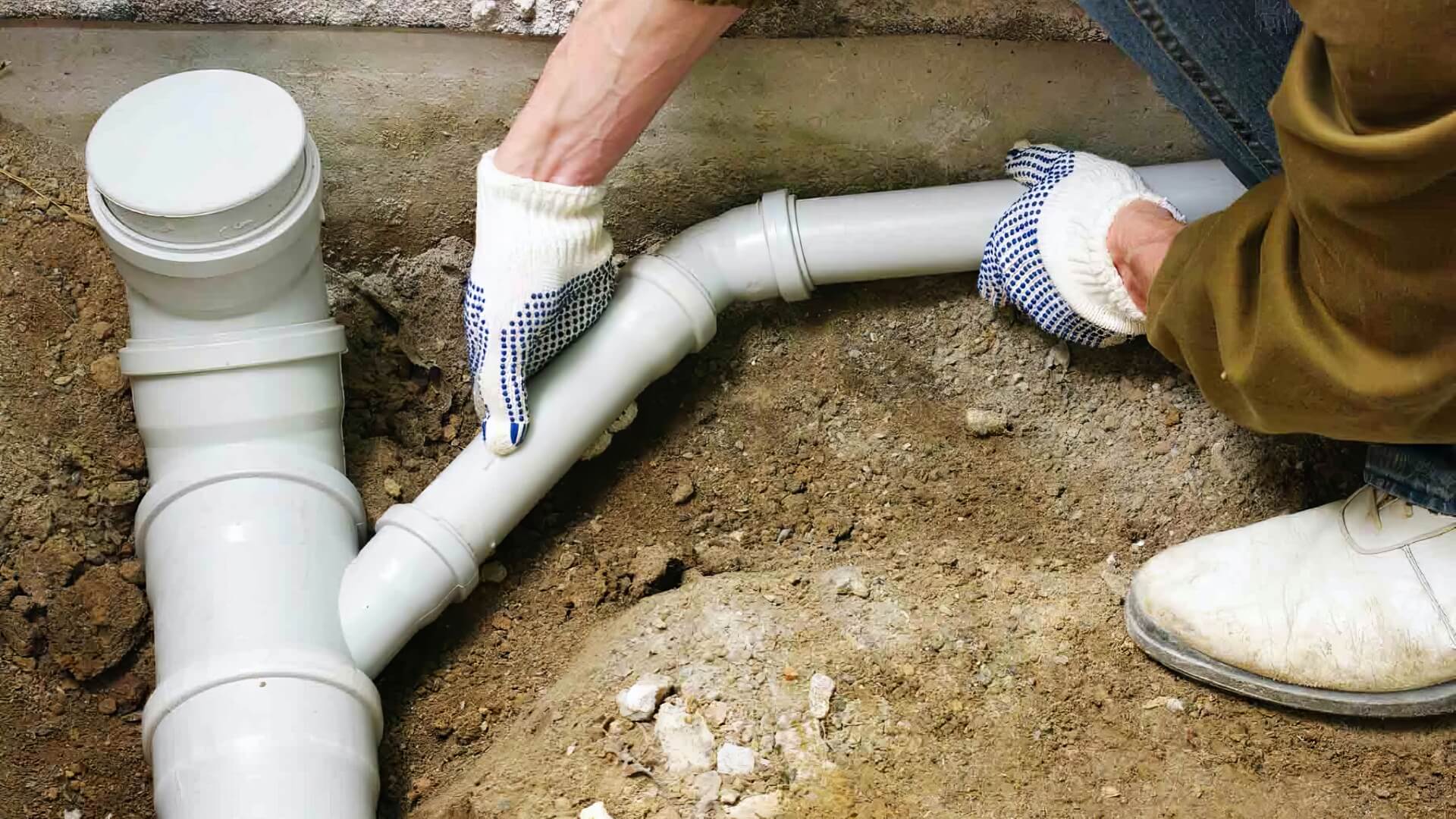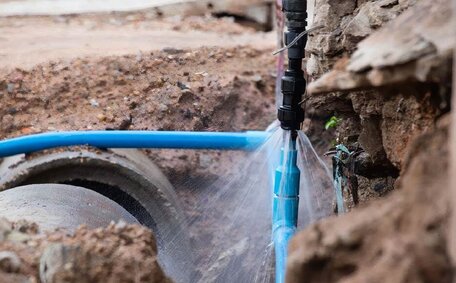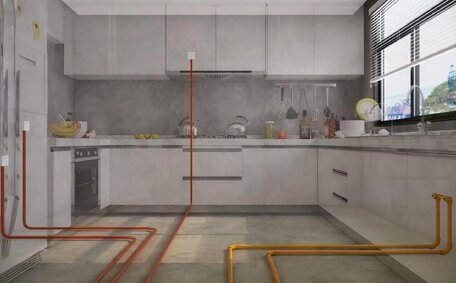What is Trenchless Relining?
Trenchless relining, also known as Cured-In-Place Pipelining (CIPP), is a pipe repair method that renews damaged pipes by installing a new pipe within the existing pipe. This is done by impregnating a resin-saturated felt liner into the original pipe and curing it in place using hot water or steam.
A significant benefit of trenchless relining is the minimal excavation required, thus preserving the area. The method uses specialised equipment to access pipes through manholes, significantly reducing surface disruption.
The cured liner forms a strong 'pipe within a pipe’, with seamless walls to strengthen the structure and prevent leaks. Durable materials result in relined pipes that often surpass 50 years of service life.
In summary, trenchless drain relining is a fast, cost-effective way to refurbish ageing pipes, preserving roads and properties while improving flow capacity and reliability.
How Trenchless Pipe Relining Works
The following are the critical stages in the trenchless pipe relining process:
- A CCTV camera inspection is first conducted to assess the condition of the existing sewer pipe and determine if it is suitable for relining.
- The pipe is cleared of debris and prepared for installation of the new Cured-In-Place Pipe (CIPP) liner.
- A resin-saturated felt tube made of materials like polyester or fibreglass is inserted into the damaged pipe through an existing access point.
- The liner tube is inflated with air pressure against the pipe walls to completely fill the pipe.
- Hot water or steam is pumped into the liner which activates the resin, causing it to cure and harden.
- As the resin cures, the liner forms a tight-fitting, jointless and corrosion-resistant replacement pipe within the old pipe.
- When cured, the liner is cooled and the installation is complete, restoring flow capacity to the pipe.
- The cured liner extends the life of the pipe for decades. No excavation is required, thereby minimising disruption.
Trenchless relining is faster, less invasive and more cost-effective than traditional methods, avoiding the need for digging and demolition of surrounding infrastructure.
Trenchless Relining: A Step-by-Step Guide
Inspecting the Damaged Pipe
The first step is to conduct a CCTV camera pipe inspection. A technician will insert a camera on a flexible cable through an existing pipe access point, often a cleanout or manhole. The camera travels through the pipe to identify any damage, defects, cracks, leaks or obstacles.
CCTV inspection determines if the pipe is structurally sound for trenchless relining and identifies the location and extent of repairs needed. It also measures the interior diameter and length to custom-design the CIPP liner for the job.
Cleaning and Preparing the Pipe
Prior to CIPP liner installation, the damaged pipe is rigorously cleaned with high-pressure water jets to eliminate grease, mineral deposits, roots, and other debris.
The pipe ends are sealed off with temporary barriers that allow control and containment of air pressure for the liner inflation process. Bypass pumping may be set up to maintain the sewage flow, particularly if the main sewer line is being relined.
Installing the New Pipe Liner
For compromised pipelines, the resin-impregnated CIPP liner is inserted and inverted during installation to cover the damaged section effectively.
Air or water pressure inflates the liner tightly against the pipe walls, extending along the entire length. The liner now bridges and contains the pipe damage, ready for curing.
Curing the Liner and Conducting Final Inspections
Steam cure installations employ steam generators, while hot water systems circulate water at up to 82°C to activate the resin and ensure a thorough cure.
The process takes several hours, as technicians maintain the temperature and pressure. The heat-cured resin transitions from its flexible state into a hardened, jointless pipe lining with long-term structural stability.
A final CCTV inspection confirms correct deployment of the CIPP. The end barriers are removed to reconnect the renewed piping with normal inflow and outflow restored.
Trenchless versus Traditional Pipe Replacement: A Comparison
Trenchless relining offers numerous advantages over traditional pipe replacement methods that involve excavation:
Cost Savings
Trenchless relining is more cost-effective than replacement, eliminating expenses for demolition and landscape repairs, and requires less equipment since existing pipes are reused.
Speed
Structural Reinforcement
The epoxy or polyester-reinforced liners used in CIPP method strengthen and reinforce ageing pipe walls.
Pipes subjected to relining can have a service life of 50-100 years, far exceeding the 25-year lifespan of lesser-quality pipes, making trenchless relining a long-term investment.
Key Benefits of Trenchless Pipe Relining
Trenchless pipe relining presents several advantages over traditional pipe replacement, including:
Trenchless relining ensures minimal ground disruption, offering a method to preserve your landscape while maintaining the integrity of aboveground infrastructure and traffic flow. For further advice, please contact our customer service.
The process clears any internal build-up, restoring pipes to their optimal flow efficiency with smooth interior walls.
Eco-friendly technologies in trenchless relining, like Brawoliner, use UV light for curing, reducing emissions and eliminating hazardous by-products.






